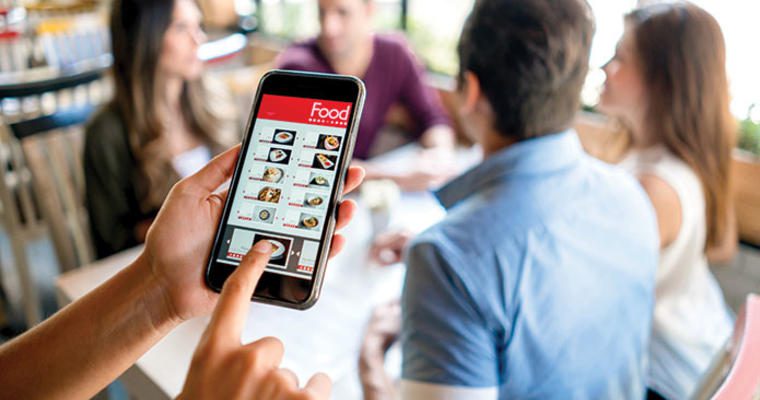Mobile devices give people the ability to access information, shop, place orders and pay any time. Mobile ordering is a technology they embrace more and more. For restaurants, who make money by understanding what people like, now is a good time to consider the value mobile technology can add to your operation.
Smartphones are everywhere, and they’ve become part of the customer experience. Fortune.com reports last year was the first time the percentage of orders placed electronically—online, smartphone, tablet—exceeded orders placed verbally by phone. If you haven’t considered mobile ordering technology, you could be missing a share of what Business Insider Intelligence predicts will be $38 billion in sales by 2020.
Gordon Food Service Commercial Segment Manager Doug Owens says mobile ordering may not be right for every operator, but it can’t be dismissed without considering potential impacts. This sentiment is echoed by Shiva Srinivasan, founder of restaurant mobile technology company Zuppler, who stresses how important it is for operators to understand a few basic questions:
Is mobile ordering necessary?
So why does a restaurant need mobile ordering? First, Srinivasan points out, about 85 percent of all restaurant customers have a smartphone, and they are comfortable purchasing things online. So, if customers can find restaurant websites through their mobile device, they are going to want to order online through a mobile-friendly website. If they can’t order this way, the restaurant is going to lose out on business from these customers.
What does it mean to a foodservice operation?
Mobile ordering capabilities offer other business benefits as well. Geolocation (identifying the location of a person using the internet connection of their mobile device) on mobile devices can alert customers about nearby dining and even provide a link to restaurant sites. Once there, they become engaged customers, Srinivasan says. With that easy ordering interface, there’s likely to be an increase in takeout business. Even a Google business listing has an option for online ordering. Mobile ordering gets eyeballs to your business and gives you a chance to make a sale.
A site or an app … what’s the difference?
In addition to mobile-responsive sites, there also are mobile apps. Each one has the ability to increase business, but with a different audience, Srinivasan notes. One helps new customers find your restaurant and the other helps regular customers stay in touch.
Mobile-responsive websites work best for smartphone users searching for a nearby restaurant. When they find your site, it needs to be optimized to that mobile device so it’s easy for the customer to order. If your website is not mobile responsive, it gets downgraded on organic searches (when someone enters a search term in a search engine, such as Google) and is not easily found.
Mobile-apps are important for loyal customers who order frequently. They aren’t searching for restaurants; they want to order directly from you. Apps also allow you to send push notifications (messages that pop up on someone’s mobile device) and alerts directly to customers.
Both a mobile-responsive website and a mobile app are critical, Srinivasan says. He recommends investing first in a mobile responsive website because it has more potential to organically grow your business.
When will investing in mobile ordering pay off?
One reason restaurants may be hesitant to invest in a mobile ordering platform is cost. Companies that create platforms are providing a business service, which has a cost associated with it. Foodservice operators wonder how long will it take to see a return on their investment. The answer, Srinivasan says, is “quicker than you think.”
Once you choose a vendor, it takes about four weeks to get up and running. It’s your job is to make sure the site has all the information the user needs. Remember, he says, people eat with their eyes, so pictures and galleries are important. You also need to make sure to update all of the online directories. Do all of that and you should see online traffic automatically increase and more business coming in. Within six weeks, you could see a return on your investment.
What’s my next step?
If you have decided mobile ordering is a good fit for your restaurant, there are a number of options available. Vendors need to have the right tools for your sales and service goals. Srinivasan suggests asking these questions:
- Do you have experience with restaurants?
- Do you have samples of sites you’ve built similar to what I’m looking for?
- Will this site integrate with my existing tools and technologies, like my reservation and point of sale systems?
- Can you provide references for past work?
All questions should lead to maximizing online visibility, he says. A website provider will make sure a restaurant’s content is updated all over the web—a Google business listing, Yelp, Trip Advisor, etc.—so no matter where a user looks for your restaurant online, they can find it.




























